- Administrator
- Albums and Singles
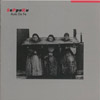 As a compilation, this is a somewhat odd proposition: the first half consists of singles dating back to before the release of Information Overload Unit, the latter is post-Leichenschrei, but pre-Machine Age Voodoo material, so essentially sandwiched between their zenith and their nadir. With early material vacillating between noisy textures and punk trappings, and the later tracks showing hints of their synth-pop direction, there's a definite dichotomy here, but both halves excel greatly in what they seek to do.
As a compilation, this is a somewhat odd proposition: the first half consists of singles dating back to before the release of Information Overload Unit, the latter is post-Leichenschrei, but pre-Machine Age Voodoo material, so essentially sandwiched between their zenith and their nadir. With early material vacillating between noisy textures and punk trappings, and the later tracks showing hints of their synth-pop direction, there's a definite dichotomy here, but both halves excel greatly in what they seek to do.
Walter Ulbricht/Mute
Opening with material from their confusingly early singles, "Factory," "Mekano," and "Meat Processing Section" (all of which shared tracks between them), "Contact" and "Mekano" both use abstractly processed and effected guitars with what sounds like metal barrel percussion and rather naked vocals to create something that’s closer to "punk" than "industrial," to attach genre terms, but fits into neither pigeonhole well."Germanik" amps up the dissonance, with the guitar sounding as if it is piped in from another room while metal percussion and barked pseudo-fascist German vocals become the norm.
Once we get to the middle portion of the album the dissonance is ramped up.The previous three tracks come across as downright quaint once "Retard" starts.Different from the Information Overload Unit track of the same title, the combination of extreme high and low frequencies rival TG's "Subhuman" for pure obnoxiousness, and the lyrics discussing the autopsy of a 12 year old girl is anything but pleasant.I honestly have problems sitting through the entire song just due to the high pitched whistling noise that never relents.
But, of course, there is "Slogun."I think an entire book could be written on both the track and its legacy in various forms of aggressive music.An unidentifiable morass of electronics, guitar, distortion, and what sounds like power tools blast for over six minutes, underscored by an overdriven, rudimentary drum machine beat.Probably most well known is the vocals:manic shouts from both Neil Hill and Graeme Revell barking the slogan of the original Socialist Patients Collective, "Kill for inner peace/bomb for mental health/therapy through violence." Words can't do "Slogun" justice:it is a visceral, physical experience that never stops.I’ve never heard any other piece of music from any genre that hits on such a somatic level.I cannot disagree with the masses that sing the praises of this song:most of SPK's career was great, but this is the perfect culmination of their work, and perhaps the definitive song of the era.
There wasn't an attempt to do a "Slogun 2" after this, on either Information Overload Unit or Leichenschrei, nor should there have been.The remainder of Auto Da Fe is a selection of studio and single tracks from 1982 and 1983, taking the song-oriented direction that was hinted at on Leichenschrei (i.e., "Despair," "Day of Pigs"), but strip away much of the noise and distortion, revealing a sparse, dour proto-pop that is quite different from what they did before, but not entirely out of character either.
"Metal Field" keeps many of the pieces from Leichenschrei:synthetic and metal drums, analog synths, and vocals, but it’s more restrained and subtle.Revell is actually singing, though in a flat, emotionless monotone, and the synths are sequenced into actual melodies and bass lines.It is ostensibly danceable electro, but has this cold, detached feel that makes it anything but conventional.
Similarly, the more upbeat "Walking on Dead Steps" puts together many of the same pieces, but even with its faster tempo and higher energy, lyrics like "fascism is in fashion again" show it wasn't an attempt to gain commercial success.The material from the Dekompositions EP that rounds out the album is comparatively more atmospheric, channeling the mood of their darker work, but with notably more polish and poise."Culturecide" and "Another Dark Age" sound less aggressive compared to other tracks, but are far from danceable, instead beautifully capturing a depressive, bleak mood throughout, even without the layers of grimy distortion and feedback.
It should also be noted that this is not a complete collection of early SPK, and a fair number of things were left off.Somewhat understandably, "Factory" was left off, as it's just a different take of "Mekano" with alternate lyrics, though I would have liked it to have it included for completeness sake."No More" also comes from these early sessions, but is at its core rather amateurish, high schooler punk rock.It's not bad per se, but it doesn’t fit in with any of the other SPK material either.
The "See Saw/Chambermusik" 7" is also excluded completely, likely due to the fact that Revell was not part of the sessions:he was away in the UK recording Information Overload Unit, while Neil Hill, and Hill's wife recorded these tracks in Australia.They actually aren't far removed from what Revell and company were doing at the same time, so their exclusion seems to be more about Revell not participating in the sessions, or perhaps licensing/legal issues.
I think we all know the story after this point:Revell and Leong recorded their attempt at pop music, Machine Age Voodoo, which always struck me as trying too hard.The stiff attempts at funk and conventional pop vocals made the last remnants of the "old" SPK that were there: the metal percussion, feel like an attention-seeking novelty rather than an asset.Coupled with the stereotypical, almost offensive Asian influenced sound, it was an unpleasant piece of generic pop.I'll shamelessly admit that I have the entire Pet Shop Boys discography and actually like Ministry's With Sympathy, but Machine Age Voodoo was simply too much.
Afterward, Revell went on to record Zamia Lehmanni as SPK, paving the way for his current career in film score.That album I can certainly appreciate, but barring "In Flagrante Delicto," it never grabbed me like their early stuff.The slight reprise of pop that came with Gold and Poison I actually found pleasant, if innocuous and vanilla.
But obviously, their catalog up to Dekompositions is what represents their strongest contributions to adventurous music, and it all has held up well over the years.While Leichenschrei is their most cohesive, singular work, I probably show Auto Da Fe some favoritism because it has such a varying sound to it.It actually excels in its disjointedness, and the fact that it has "Slogun" on it doesn’t hurt either.I don't think that any these three albums can be separated though, as they all have their own strengths and contributions to experimental sound art.While I personally only been exposed to them for a bit over a decade, they have lost none of their impact on me, and continue to be as brilliant as ever.
samples:
 
Read More
- Administrator
- Albums and Singles
 This album documents a fascinating yet flawed live collaboration that occurred at a church in Toulouse, France in 2007 where Palestine's eerie and unpredictable pipe organ playing was processed in real-time by Montessuis and his laptop.  The result is a memorably bizarre piece that lies somewhere between complex, oscillating drone and a mad scientist blasting out cacophonous chords in his remote lair on a storm-ravaged precipice. At least, it does until Charlemagne makes the unfortunate decision to start singing.
This album documents a fascinating yet flawed live collaboration that occurred at a church in Toulouse, France in 2007 where Palestine's eerie and unpredictable pipe organ playing was processed in real-time by Montessuis and his laptop.  The result is a memorably bizarre piece that lies somewhere between complex, oscillating drone and a mad scientist blasting out cacophonous chords in his remote lair on a storm-ravaged precipice. At least, it does until Charlemagne makes the unfortunate decision to start singing.
The best thing about Charlemagne Palestine's well-known eccentricity is that I never know quite what to expect when he releases a new album, especially when other people are involved. Voxorgachitectronumputer still manages to stand out as an especially curious and counter-intuitive work, however, as I continued to have no idea what to expect up until its very last notes.
It begins somewhat unpromisingly with a sustained, quavering organ tone coupled with a shrill (almost insectoid) hum, over which Palestine starts to idly improvise.  At first, he does not stray much from the sort of stuff that would normally be played on a church organ, but his faux-sacred playing gradually becomes increasingly erratic and interrupted by jarring blurts and dissonant stabs that seem fairly random and unmusical.  Fortunately, Joachim stays quite busy, using the early part of the piece to add layers to the underlying drone, building both density and harmonic complexity.  His behind-the-scenes machinations aren't immediately obvious at first, but by the 15-minute mark, the low-end has grown deep and hollow and the oscillations have taken a tense, somewhat menacing tone.  It was around this point that I realized that I was completely sucked in and enjoying the piece enormously.
Once Joachim has enough constantly shifting layers weaved together, the piece takes on a queasily shimmering and throbbing life of its own and continues to unfold in an expected and compelling way (though Palestine nearly sabotages it a few times with unsubtle blats and noodlings).  The denser the piece grows, the more absorbing it becomes, as the drone becomes so huge and engulfing that Palestine's flurries no longer sound like harsh interruptions– they now sound like they are fighting through the roar to be heard.  Then, around the 45-minute mark, the duo pull off a neat dynamic feat: the bottom drops out, leaving the shivering nimbus of spectral, laptop-damaged microtones in the foreground.
Lamentably, however, the piece is then torpedoed by the aforementioned ghastly singing interlude: Palestine starts either loudly and nasally chanting in a foreign language or speaking in tongues and the piece is completely ruined for me. In an instant, Voxorgachitectronumputer degenerates from a bizarre drone masterwork to something approaching the worst kind of outsider art.  I realize that odd artistic decisions and puzzling behavior are part of Palestine's charm, but it almost feels like he spent the whole piece digging though his bag of tricks for the right tool to destroy it all, then narrowly managed to succeed mere moments before the end.  In reality, he was probably either caught up in the music or trying to inject some spirituality/catharsis/entropy/primal energy into the performance, but the effect is the ultimately the same whatever the intention: quite grating.
Samples:
 
Read More
- Administrator
- Albums and Singles
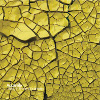 This album marks the promising debut of Students of Decay's subscription series, which also features artists like Danny Paul Grody, Dani from Celer (Chubby Wolf), and Chihei Hatakeyama.  Aquarelle is not currently as well-known as some of the other artists in the series, but this album should go a long way towards remedying that.  Ryan Potts' work shares some common ground with grit-heavy ambient artists like Tim Hecker, but his unusual combination of sculpted hiss, melody, and organic instrumentation is very much his own.
This album marks the promising debut of Students of Decay's subscription series, which also features artists like Danny Paul Grody, Dani from Celer (Chubby Wolf), and Chihei Hatakeyama.  Aquarelle is not currently as well-known as some of the other artists in the series, but this album should go a long way towards remedying that.  Ryan Potts' work shares some common ground with grit-heavy ambient artists like Tim Hecker, but his unusual combination of sculpted hiss, melody, and organic instrumentation is very much his own.
I have been hearing a lot of albums lately in which the opening piece completely eclipses everything after it and Sung In Broken Symmetry fits comfortably in that odd trend: "With Verticals" embodies everything that is wonderful about Aquarelle's music.  The piece is built around rhythmic washes of static crashing over a pleasantly twinkling drone, which is a textural delight.  The magic, however, lies in the details–the glittering notes submerged within the white noise waves, the way the static seems to rush together right before Brandon Wiarda bows his cello, etc.  Potts' use of static here is pretty remarkable, creating the illusion that entropy is cohering into order, then breaking up again  All that wouldn't matter as much if the piece were purely abstract and experimental in nature, but the languid cello creates some beautiful and poignant harmonies with both the underlying drone and itself.  When all of Potts' areas of expertise come together in one place, the result is extremely impressive.
The remaining three pieces don't quite replicate that level of synergy, but they are still pretty enjoyable.  "A Strange Sweet Woe" follows the template closest, only it lacks Wiarda's cello or a strong pulse.  Instead, it takes the shape of a roiling ocean of distorted shimmer that gradually ebbs to make room for a somber guitar and piano outro.  On "Origin," Potts' lap-topped guitar maintains a warm hum beneath gusts of shifting static that sound like leaves rustling in a strong wind.  Wiarda and his cello make an unexpected return near the end though, resulting in a strange interlude of moaning and sliding strings.  The album ends with "The Blue Light Was My Baby," which begins with a fragile and hesitant acoustic guitar (or banjo?) that gets quickly engulfed in a treble-heavy roar before returning for a lazily strummed coda.
That final piece highlights a few of the small flaws that are preventing Potts from realizing his full potential, as he is a bit too heavy-handed with distortion and treats his acoustic guitar like something of a sacrificial lamb to be consumed by a wall of noise.  Also, it seems like the raison d'être for the piece is the display of power and that not much effort was devoted to crafting an appealing hook or melody to counterbalance it.  Given that Ryan's two greatest talents (artfully obscuring his music with chaos and creating warm, autumnal drones) are pulling him in opposite directions, though, I suppose it is no surprise that he occasionally errs too far on one side.  It's certainly a difficult balance to achieve, but Ryan hits the mark here more than he misses.  Also, I always wish albums made more effective use of the textural properties of acoustic instruments and focused more strongly on melody, so Aquarelle is in pretty illustrious company.  The key things here are that Ryan has a distinct aesthetic and that "With Verticals" is an absolutely perfect song.  Not many albums can boast that.
Samples:
 
 
Read More
- Administrator
- Albums and Singles
 Fans of underground hip-hop have been eagerly awaiting a release like this for a while, as Clams' distinctive productions have been the backdrop for several of the more beloved songs by the utterly inscrutable "BasedGod," Lil B. Although he self-released a "mixtape" a while back (just reissued on Type), this EP is his first ever batch of songs conceived solely as stand-alone pieces.  There are some clear similarities to his other work, like sultry and slowed-down R&B samples, but Rainforest also boasts an appealingly woozy shoegaze/hypnagogic pop sensibility.  I don't think this effort quite deserves the comparisons to Tim Hecker or the "hottest producer on the planet" hyperbole he's been receiving recently, but it's still pretty damn good.
Fans of underground hip-hop have been eagerly awaiting a release like this for a while, as Clams' distinctive productions have been the backdrop for several of the more beloved songs by the utterly inscrutable "BasedGod," Lil B. Although he self-released a "mixtape" a while back (just reissued on Type), this EP is his first ever batch of songs conceived solely as stand-alone pieces.  There are some clear similarities to his other work, like sultry and slowed-down R&B samples, but Rainforest also boasts an appealingly woozy shoegaze/hypnagogic pop sensibility.  I don't think this effort quite deserves the comparisons to Tim Hecker or the "hottest producer on the planet" hyperbole he's been receiving recently, but it's still pretty damn good.
The primary idea behind the Clams Casino aesthetic seems to be such a simple one that I am surprised more people have not jumped on it: taking existing pop hooks and warping them into somewhat different pop hooks.  In fact, Casino is kind of the antithesis of "crate-digger" archetype embodied by folks like Madlib, making absolutely no effort to dig up and cannibalize obscure deep cuts that no one else has discovered yet.  Instead, Clams cheerfully borrows from people as ubiquitous as Bjork and Adele.  That absolutely should not work, but Clams (NJ's Michael Volpe) has an amazing ear and devotion to detail.  Also, he is quite inventive.  I guess the lesson here is that a skilled artist can make something his or her own regardless of the materials at hand.
The finest example of his talents on this particular release is the languorously sensual opening piece, "Natural."  The hook is a beautifully slurred and stuttering female vocal snippet that could easily carry the song on its own, but Volpe fills the periphery with all kinds of disorienting and spectral touches like hollow echoes, hisses, backwards instrumentation, and heavy delay that yields a mini-masterpiece of layered pop-savvy melancholia.  It's actually one of my favorite songs of the year thus far, resembling a simplified, shadowy cousin to some of the better recent Four Tet material.
The rest of the songs on the album do not quite hit the same heights, but they still come pretty close (though the Boards of Canada-esque "Treetop" seems like a step in the wrong direction).  Each of the remaining three songs boasts an enticing concoction of ruined and stretched vocals, blurred instrumentation, and spartan head-bobbing beats.  Unfortunately, there is a small catch–they all seem like variations on a very specific template.  Even though this release is under 20 minutes long, it feels like a single idea is being stretched very far.
Also, these pieces are more maximalist than Michael's previous work and sometimes have rock-like crescendos.  I can understand why he made those decisions, as this is the first time his music has had to stand by itself and something needs to fill the void left by the absence of a vocalist, but I don't think he quite got the dynamics right. The best (and most unique) aspects of Clams' work are the ghostly and fragile ones and they need sufficient space to make their full impact–they don't always have it here.  I love the individual parts of this EP: the textures, the hooks, and the subtle hallucinatory touches, but lack of variety prevents me from fully embracing the whole. Volpe is undeniably a formidable and ingenious producer, but his skills as a composer are not quite at the same level yet.  This is well-worth investigating (as is some of his other work), but the surrounding hype is a bit disproportionate for an artist still best appreciated in single-song doses.
Samples:
 
Read More
- Administrator
- Albums and Singles
 Irish steel-string guitarist Cian Nugent's fantastic full-length for VHF is his first widely available recording. It recalls a timeless vinyl record with its two side-length pieces—cohesive and complementary, deftly played, rooted in tradition with a modern experimental bent.
Irish steel-string guitarist Cian Nugent's fantastic full-length for VHF is his first widely available recording. It recalls a timeless vinyl record with its two side-length pieces—cohesive and complementary, deftly played, rooted in tradition with a modern experimental bent.
I first heard Cian Nugent's music on Important Records' tribute to Robbie Basho, We Are All One, in the Sun. His piece, "Odour of Plums," stood out as a highlight—no small feat on an album bookended by Steffen Basho-Junghans, featuring several other strong players. I'm not one for tracking down obscure releases, so Doubles is the first I've heard of Nugent on his own. While I expected something competent, Doubles is a complete joy to listen to, ambitious and fulfilling. It sits comfortably alongside the better works of Ben Chasny and Jack Rose, Jim O'Rourke's guitar-centric albums, and John Fahey's latter-day experiments on Table of the Elements.
"Peaks and Troughs" opens Doubles with a few resonant, off-kilter chords, strummed slowly, the dead air lingering uncomfortably in between. Individual strings are plucked slowly, then a bit faster, lingering around one note, then steering away, then hesitantly back again. Four minutes in, the piece all of a sudden transforms into three dimensions, like watching a flower bud blossom in fast-forward motion. Nugent's technique here draws equally from Middle Eastern and American Primitive guitar techniques, sounding like he drew inspiration out of Sir Richard Bishop's playbook (or something altogether more obscure).
Eventually, all the low end drops out, and Nugent's playing becomes hushed, sparse, but more frantic, desperate. Twelve minutes in, the silence is deafening—and then Nugent brings back the same off-kilter chords that he used at the start, layering notes onto each other until his deft fingerpicking is overtaken by a deep droning hum—at first accompanying his guitar, then suffocating it altogether. (That's about when my wife told me to "turn that shit down"—need I say more?) Listened to without distraction, "Peaks and Troughs" is an eerie, stunning piece—the best solo guitar I've heard all year.
The flipside is "Sixes and Sevens," which also takes its time getting off the ground, with a few piercing chimes and low-frequency thuds scattered in between the vibrating strings. With time, the song unfolds into something utterly gorgeous, with Nugent's pleasant guitar playing accompanied by organ, strings, woodwinds and brass at different points. The song ebbs and flows nicely, its instrumentation lush, its mood relaxed. It never reaches the high drama of "Peaks and Troughs," but what it deliberately lacks in heart-in-throat suspense, it makes up in warm, immersive composition. It is no small feat for a guitarist to record two tracks, 45 minutes between them, and consistently hold my interest. Nugent succeeds, and Doubles is essential listening.
Samples:
Read More
- Administrator
- Albums and Singles
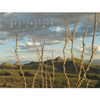 Steve Roach's 1984 opus Structures from Silence has been a staple of my record collection for ages, but it has been about eight years since I last checked out anything new from him. Although he can sometimes be a bit too earthy for my taste, Destination Beyond shows that Steve has not yet abandoned the spacier side that produced The Magnificent Void, nor have his powers begun to ebb at all. I wish I had been paying more attention, as he seems to be in the midst of a rather fruitful creative period.
Steve Roach's 1984 opus Structures from Silence has been a staple of my record collection for ages, but it has been about eight years since I last checked out anything new from him. Although he can sometimes be a bit too earthy for my taste, Destination Beyond shows that Steve has not yet abandoned the spacier side that produced The Magnificent Void, nor have his powers begun to ebb at all. I wish I had been paying more attention, as he seems to be in the midst of a rather fruitful creative period.
Destination Beyond consists of a single 71-minute track that is very much a kindred spirit to Brian Eno's Apollo, owing largely to its shimmering washes of warm synths and general spacious and shadowy atmosphere. Notably, there is not much else to it, merely a slow bass pulse, a burbling arpeggio, and some skittering percussion. Also, it does not unfold into multiple movements or sections: the drifting, spectral tones that open the piece remain central for its entire duration. Nevertheless, it all works extremely well due to Roach's clear mastery of the form. While nothing new ever appears, the song's sparse components subtly wax and wane in relation to one another throughout and it all flows seamlessly and organically, which is likely the result of Roach's insistence on playing in real-time and eschewing most contemporary computer-editing practices. It almost sounds like he is manipulating how each individual note dissolves and decays, which would require an almost inhuman degree of meticulousness (but probably would not surprise me).
Roach seems completely unconcerned with and uninfluenced by prevailing trends in drone and ambient music: there is nothing here that indicates that it could not have been released in the early '80s. While certainly indebted to Eno, Klaus Schulze, and Tangerine Dream for his original inspiration, Steve’s biggest influence always seems to be himself. I think that is probably an admirable trait, but it is an interesting contrast to the trajectory of his erstwhile collaborator Vidna Obmana (Dirk Serries), who has found a new generation of fans as Fear Falls Burning. Roach seems decidedly unlikely to deliver any such surprises himself, but the reward for his steadfastness seems to be a sophistication and elegance that is uniquely his own (the rewards here are greater for connoisseurs of the form, I believe).
Destination Beyond is a very good album. It's hard for me completely fall in love with it, as it is a bit too calm and edgeless (despite some foreboding undertones) for my taste, but I am nonetheless extremely impressed with the virtuosity of Roach textural juggling act. Also, it is a pretty excellent and deserving addition to the space music canon, certainly holding its own against Roach’s revered precursors (who are also generally too calm and edgeless for my taste).
samples:
Read More
- Administrator
- Albums and Singles
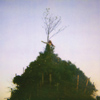 Black to Comm's Marc Richter is an artist that perpetually seems to be on the verge of releasing an absolute masterwork, always creeping closer and closer but never quite nailing it. Alphabet 1968 does not quite buck that trend completely, but it is an oft-brilliant and unforgettable album nonetheless. Richter's impressive artistic evolution is showing no sign of slowing.
Black to Comm's Marc Richter is an artist that perpetually seems to be on the verge of releasing an absolute masterwork, always creeping closer and closer but never quite nailing it. Alphabet 1968 does not quite buck that trend completely, but it is an oft-brilliant and unforgettable album nonetheless. Richter's impressive artistic evolution is showing no sign of slowing.
Marc Richter’s stated intention for this album was to realize a more “classic” and song-based aesthetic than he has shown before. To my ears, he seems to have been largely successful: Alphabet 1968 is filled with pianos, vintage synthesizers, strings, and an omnipresent patina of tape/radio hiss that evokes a vague and enigmatic past era. Also, the noisier and more industrial influences evident on previous Black to Comm albums has been markedly toned down and replaced by a sparser, more meditative vein of surreal darkness (though traces of the old harshness remain in “Houdini Rites”). His success at songcraft, on the other hand, is little more open for debate, though Marc has kept most of the pieces under four minutes and shows an unexpected talent for crafting melodic hooks.
There are strikingly beautiful moments strewn all over Alphabet 1968: “Jonathan”, "Rauschen”, “Forst”, and particularly “Musik For Alle” are all excellent and otherworldly. The piece that sticks in my mind the most, however, is the closer (“Hotel Freund”), which starts off deceptively with several shrill, clashing tones before abruptly launching into something that sounds like a bittersweet slow dance in a haunted ballroom. My other favorite moment is likely the melancholy and haunting organ and (possibly) theremin (or singing saw?) duet, “Traum GmbH,” but I keep finding new things to like about other pieces each time I listen to the album, so that may change tomorrow.
Interestingly, however, “Traum GmbH” is also the best example of how Alphabet 1968 falls just short of perfection: while achingly moving, it is over in under two minutes and never quite progresses beyond its opening motif. Marc is singularly adept at finding and layering the perfect sounds together, but shaping his strange and wonderful loops into actual songs still seems to elude him somewhat. Of course, Black to Comm’s prematurely abandoned soundscapes are usually much more creative and rewarding than much of what I’ve heard from other bands this year, so that seems like something of an unfair quibble. Unfortunately, great potential breeds high expectations.
That said, Richter remains a wizard at finding great samples, creating perfect blends of textures, inventively using found sounds, and borrowing the best elements from a wide range of influences. Alphabet 1968 is a crackling, mist-shrouded dream of an album, filled with backwards instruments, twinkling chimes and music boxes, beautifully sad melodies, and buried voices. In fact, this may very well be Black to Comm’s best album so far, but I would not be at all surprised to see it followed by an even better one.
Samples:
Read More
- Administrator
- Albums and Singles
 On his fourth release for the venerable label, Niblock has produced three large scale compositions, based entirely around the use of stringed instruments. In the process, he brings out the most subtle of harmonics and creates an unraveling tapestry of microscopic change in layers of sound. And a slight Band of Susans reunion.
On his fourth release for the venerable label, Niblock has produced three large scale compositions, based entirely around the use of stringed instruments. In the process, he brings out the most subtle of harmonics and creates an unraveling tapestry of microscopic change in layers of sound. And a slight Band of Susans reunion.
Spread across two discs, the three compositions here were all conceived and recorded between 2007 and 2008, realized with a slew of different players. "Stosspeng," which comprises the entirely of the first disc, features Band of Susans founders Susan Stenger and Robert Poss working together on both guitar and ebow’d bass. Each were recorded in a specific channel and limited to specific pitch groups, Poss with E, Stenger with F#, and both shared F. The result is, unsurprisingly, a slow drift of guitar tone that is far more sparse or subtle than most guitar based minimalist compositions.
The piece continues to be a serpentine composition between Stenger’s higher register tones and Poss’ lower frequency approach. The two become locked a constant struggle between the lighter and darker tones, pushing the sound between ambient, spacey shimmers and more sinister, rumbling swells. The composition premiered at a show that also featured KTL and Throbbing Gristle, so the mood is fitting to be among those artists, though the sound is far more pure and meditative than would be expected from the aforementioned artists.
Disc two opens with "Poure," the 23 minute piece for cello (played by Arne Deforce). Rather than a single session, the track is the total of 32 different layers of playing, all in the notes of A and D, but of varying octaves, and just slightly off on tuning. With only subtle adjustments via Protools, a world of instrumentation can be heard just from the harmonics produced from the layering of tracks. Sounds of trumpets, bagpipes, and church organ all appear from the strings of the cello.
The final piece, "One Large Rose," expands the instrumental repertoire to include piano, violin, and acoustic bass guitar, to weave a more complex and multifaceted, yet consistently minimalist composition. The performers of this track, the Nelly Boyd Ensemble, played 4 takes of 46 minutes each, the results of which were layered together, but otherwise unedited.
Again, more sounds than are actually present can be heard in this wall of drone, resembling didgeridoo and other strings that as a whole feels similar to "Poure," but with a heavier sonic palette. The most obvious addition is the lower register piano, but the piece overall has a more sinister quality to it, introducing dark, gutteral passages and bassy flatulent sounds to the otherwise gliding strings. As "Stosspeng" recalled a struggle between light and dark, "One Large Rose" is a contrast between chaos and order, oscillating between drifts of sound that are relatively peaceful, and hellish choruses of unadulterated noise.
Touch Strings is an excellent example for anyone who thinks "drone" is simply repetition. While conceptually there are intentional limitations put both on the performers and the composition, the interplay of the instruments produces sounds that rival the most complex pieces out there.
samples:
Read More
- Matthew Spencer
- Albums and Singles
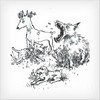 As a format, singles accommodate brevity better than wistfulness. As Pumice, New Zealand’s Stefan Neville takes a different path. In Persevere, he performs as if he had an entire afternoon to burn. His drowsy style is charming, but it is Neville’s economy as a musician that really holds this record together.
As a format, singles accommodate brevity better than wistfulness. As Pumice, New Zealand’s Stefan Neville takes a different path. In Persevere, he performs as if he had an entire afternoon to burn. His drowsy style is charming, but it is Neville’s economy as a musician that really holds this record together.
As soon as the needle drops, Persevere begins its steady but insistent evolution. Side A, “The Dawn Chorus of Kina,” gushes forth in a churning stew of wobbly bass tones and distorted strumming. It sloshes around for a minute or two then disintegrates into a series of stuttering, atonal guitar chords. Neville shifts the mood yet again, ending the piece with muted tom-tom thuds and clean-toned picking.
Neville mellows out on the flip-side. The two songs are covers, the first from folk-singer Michael Hurley, the other from the NZ punk band The Axmen. Both are built around a spindly acoustic guitar and Neville’s sonorous voice. He sings slowly and without much inflection, as if he was just awakened from an all-night cough syrup binge. The songs accommodate his style well. The closer, “Pacific Ocean” exudes beach-town ennui but still ends the record in a vibrant mood. As the song burns away, resonant organs and multi-tracked vocals merge into a final burst of dynamism.
What is most striking is how little movement is apparent in these songs. Neville’s shambolic style masks their internal progression. Only when they end is it obvious that change has actually happened. Preserve sneaks into the brain. It is easy to mistake it for a batch of run-of-the-mill bedroom recordings, but there is plenty to mull over beneath its blasé exterior.
Read More
- Administrator
- Albums and Singles
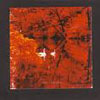 I found this CD in a small shop full of musty vinyl, fanzines, crates of tapes, and neatly arranged homemade and self released CDRs on a recent trip to Portland, Maine. I had no idea what kind of music I would find on the disc, but liking the cover, I took a stab at it. I did remain skeptical knowing next to nothing about what I had just purchased. What I found was a very humble and unassuming album of non-pretentious lo-fi folk meanderings. On listening my attitude of skepticism quickly relaxed under the pastoral melodies Jeremy Pisani coaxed from his acoustic guitar.
I found this CD in a small shop full of musty vinyl, fanzines, crates of tapes, and neatly arranged homemade and self released CDRs on a recent trip to Portland, Maine. I had no idea what kind of music I would find on the disc, but liking the cover, I took a stab at it. I did remain skeptical knowing next to nothing about what I had just purchased. What I found was a very humble and unassuming album of non-pretentious lo-fi folk meanderings. On listening my attitude of skepticism quickly relaxed under the pastoral melodies Jeremy Pisani coaxed from his acoustic guitar.
Spirit of Orr (CDR) / Streamline (LP)
The mark of a true artist, whatever genre they are working in, musical or otherwise, is whether or not their creativity blossoms within the boundaries they have set for themselves. It is easy to be limited by the trappings of any given style, and yet a trope can also be twisted and made gnarly, giving its fans the pleasure of hearing a new take on it. Pisani uses his acoustic guitar, his submerged and warbling voice, deeply buried in the mix, along with other elements of the newly weird as a focal point for crafting his song meditations. No fly by night kind of guy, it was an album he took his time with, ensuring the highest quality, recording these songs between 1996 and 2003. Listening, I get the feeling that he played with these recordings a lot, tweaking, listening, and readjusting, rerecording. I can see him in my imagination: in a bedroom or a basement, with a handful of cassettes and a four-track trying to get the sound just right. (I have no clue as to his actual recording methods, but I do find the image of a lone musician with a four-track a romantic one.) The final result is more than the sum of its parts.
There is not a bad song on the album. This is as it should be considering the amount of time spent on making it. “Green Hill Beach” is one of the high points. Starting off with a field recording of the ocean surf, it moves from gentle picking and humming into more deranged territory with a vibrato laden and reverb saturated electric guitar that sounds like a birds death cry, before fading out with blissfully plucked chords full of warm tremolo. “Flight,” which follows, is also a favorite. Here the full-bodied keyboard and airy flute takes precedence while the stocattoed-guitar adds the accent marks. Pisani is not averse to using samples and found elements either, as he does halfway through “Agrippina”, seamlessly blending in a national anthem or marching band tune to great effect.
Red Favorite’s debut is a very solid effort, and hopefully not his last. The limited run of 300 CDs from Spirit of Orr in 2007 is now out of stock but Streamline via Drag City released the album as an LP in 2008, the form for which Pisani originally conceived the album.
samples:
Read More
- Administrator
- Albums and Singles
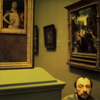 Spilling over with trembling strings and thunderous crescendos, "Coward" foreshadows the electric energy that is to be found throughout Vic Chesnutt's newest record. With members of Godspeed You! Black Emperor, Silver Mt. Zion, and Fugazi once again contributing, At the Cut is populated by giant melodies, quiet meditations, and intense studies on mortality and memory. But, for all its bombast, At the Cut is probably most notable for Chesnutt's unwavering honesty and cathartic power. Because of these qualities it has quickly become one of my favorite and most played records this year.
Spilling over with trembling strings and thunderous crescendos, "Coward" foreshadows the electric energy that is to be found throughout Vic Chesnutt's newest record. With members of Godspeed You! Black Emperor, Silver Mt. Zion, and Fugazi once again contributing, At the Cut is populated by giant melodies, quiet meditations, and intense studies on mortality and memory. But, for all its bombast, At the Cut is probably most notable for Chesnutt's unwavering honesty and cathartic power. Because of these qualities it has quickly become one of my favorite and most played records this year.
 
Reviews and presss releases of At the Cut like to concentrate on the various references Chesnutt makes throughout the record. There are, admittedly, a lot of them and on the cover of the album Vic himself appears resigned among numerous paintings, as though he were an exhibit at a museum. Some writers have been quick to point out that he references no less than W.H. Auden, Frank Norris, Philip Guston, Victor Hugo, Franz Kafka, and William Shakespeare, and that's in just one or two songs. Impressive as that may be, Vic's literary and artistic interests aren't what make his record great. In fact, with the exception of Auden, his songwriting and lyrics are unlike anything produced by any one of those artists. If the album cover suggests anything about the music at all, it's that Chesnutt's personal life is the subject of this record, not the influences that might've helped foster it.
The places where At the Cut is most unadorned are the places where it is most powerful and affecting. Whether blithely describing his history with death ("Flirted With You All My Life") or an encounter with his grandmother in the kitchen ("Granny"), Chesnutt impresses the most when he lets mundane images and ideas into his music. Those are the images that have stuck with me the most and they remind me how talented someone must be to sing about them without sounding either trite or banal. The final lines of the album could've been delivered in so many shrill and unappealing ways, but when Vic sings, "She said / 'You are the light of my life / and the beat of my heart,'" there isn't a doubt in my mind that he feels those words as deeply as anyone can. And he wants his listeners to feel them, too, without cringing or second-guessing the motives.
But, Chesnutt writes in myriad ways, so for every mention of dentures and friendship there are at least one or two psycho-analytic lines of poetry and an equal number of vague symbols or potentially mystifying scenes. In response, Vic's band dances their way through various styles of music, matching his twists and turns with jazz-like funeral dirges, the kind of rock 'n' roll expected from Bob Dylan in the mid '60s, and orchestrated blues. On first listen, Chesnutt's electric songs are the real show-stealers. Both "Chinaberry Tree" and "Philip Guston," along with the opening "Coward," put the electric guitar in the spotlight. In "Chinaberry Tree" the guitar rips across Chesnutt’s vocals like a lightning strike, and in "Philip Guston" it chugs and totters like it belongs in an Einstürzende Neubauten song. But, the more quietly intense songs like "Chain" and "We Hovered with Short Wings" have their own gravity, which is concocted with a combination of atmosphere and patient development. Although not as immediate, repeat listens reveal them to be of equal potency. Vic and company weave their way through these approaches with an even hand, favoring neither, but obviously seeking to inject every one of them with intensity and cathartic energy.
That cathartic energy plays a role equal with to Chesnutt's narrative and lyrical honesty. I cannot listen to At the Cut and passively digest it; the record forces us to feel the record along with Vic, so that when he sings about his mother dying or about deseperation and rejecting empty ritual, associated memories, emotions, and ideas simultaneously emerge without anyone having to mention them. There are a few musicians that aim for and achieve this effect. It is among the greatest and highest accomplishments any songwriter and lyricist can achieve in popular music. Vic Chesnutt reaches such heights on At the Cut and he does it almost effortlessly, as if that was what he was born to do. This is easily one of Vic Chesnutt's best records, and a standout album in a year filled with superb music.
samples:
 
Read More


